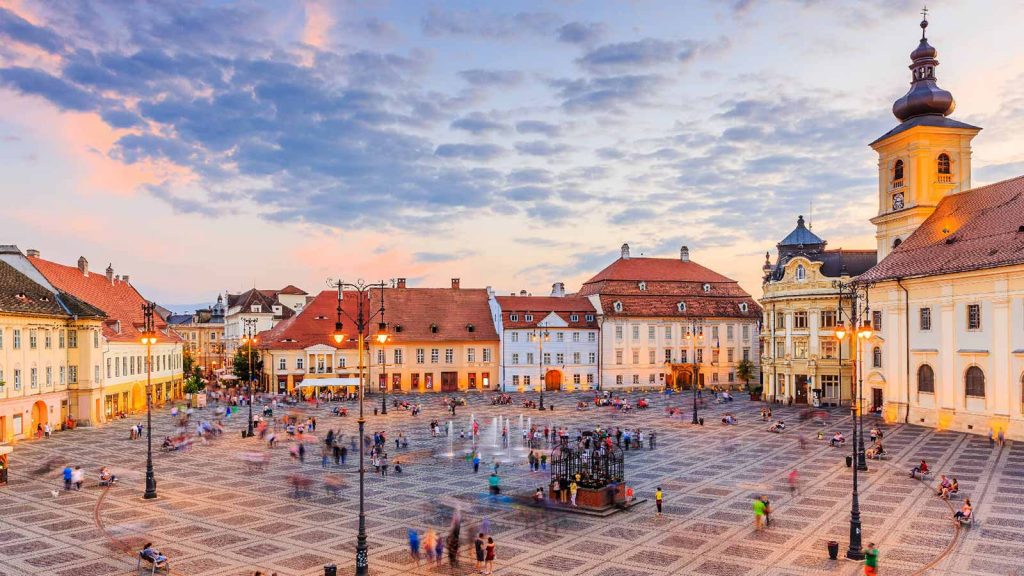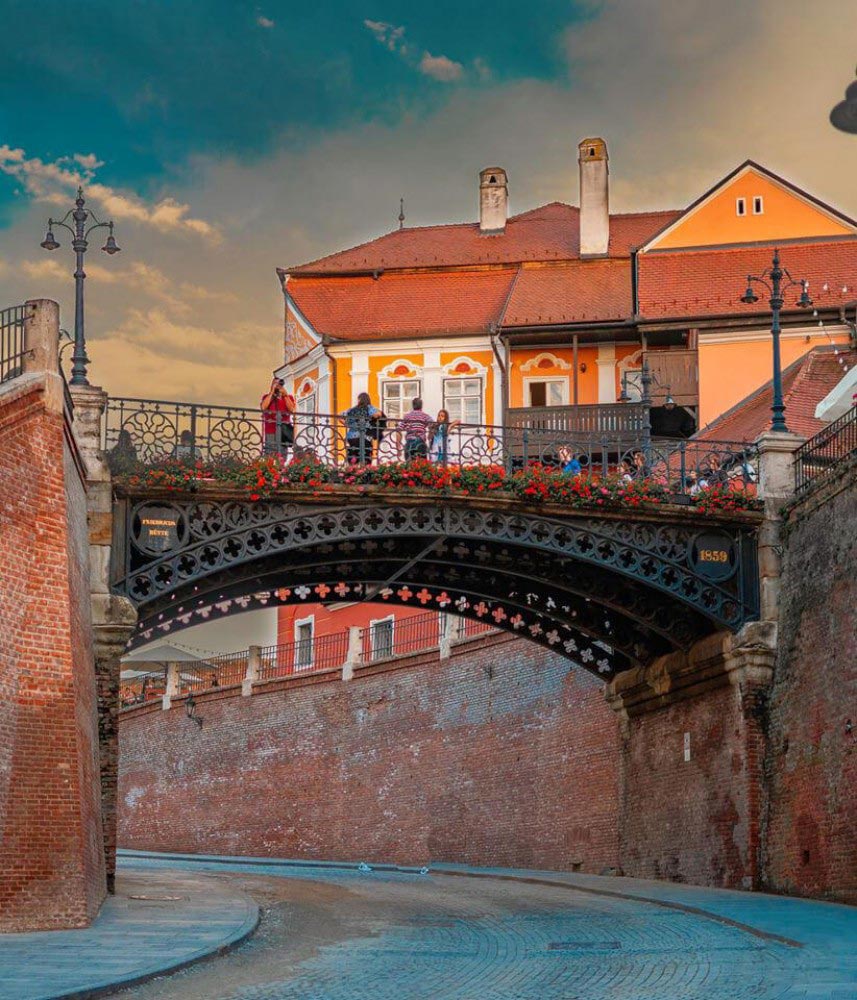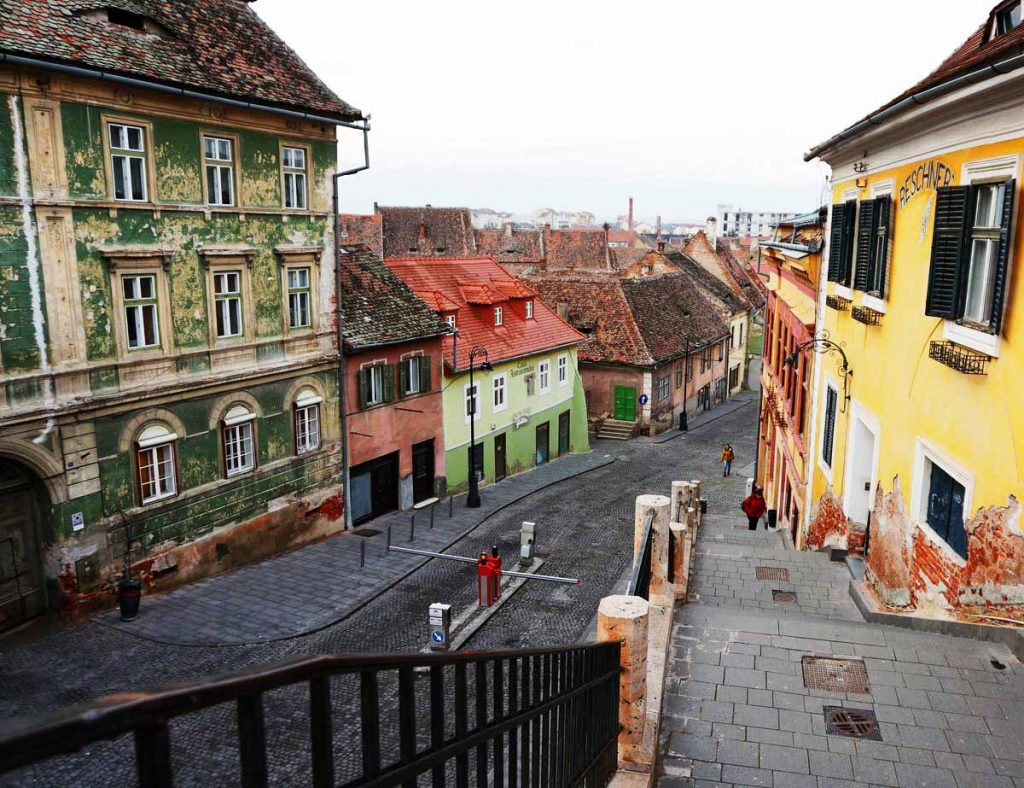Sibiu represents the creation of the Saxon settlers, who in the 12th century laid the foundations for what would later become a key commercial hub for Transylvania. Both its legacy and that of many towns that perished in the city have created a space rich in many ways. Sibiu has a special character, represented by its story-filled buildings, narrow cobbled streets, the houses with eyes, and the hospitality of its people and the authentic dishes they cook. If we’ve convinced you and you want to escape for a day to Sibiu, you can organize your visit with the suggestions we’ve prepared in this article.
What to see in a day in Sibiu?
One striking fact about Sibiu is its composition, made up of two cities: the Upper Town and the Lower Town. We recommend starting your visit in what was once called the “Upper Town”: an area where you will find the Grand Square (Piata Mare), the Lesser Square (Piata Mica), and Huet Square, three spots dotted with majestic buildings and numerous restaurants. This area also features the pedestrian street “Balcescu” and its multiple terraces.
You can start by getting a feel for the city from the Grand Square, considered its main soul. Nearby are some of Sibiu’s most precious architectural gems. Perfect examples include the Brukenthal Palace, the Roman Catholic Church, the Blue House, the Haller House, or the Filek Palace. The Grand Square has always been the space where history, aristocracy, and contemporary atmosphere blend in incredible harmony. Take a break at one of the terraces and enjoy a coffee while observing the pace of life in Sibiu.

Another aspect to consider is that the Grand Square, Lesser Square, and Huet Square are interconnected by various passages that extend through the “Upper Town”. These will effectively lead you to the Lesser Square, which is further divided into two distinct areas by Ocnei Street, leading under the Bridge of Lies to the Lower Town.

In the past, many of the buildings in the current market area were used for craft workshops and the making of traditional items. This is a perfect showcase of Sibiu’s own past, which blends with the buildings scattered around the area, many of which are historical monuments that largely retain the appearance the square had in the 15th century. Once you venture in, you will find the “Franz Binder” Universal Ethnography Museum, the House of Arts, the Luxembourg House, or the Pharmacy History Museum. We recommend not forgetting the Council Tower, from which you will get an incredible panoramic view of the city.

As you walk through the streets of Sibiu, you will also notice the tall buildings you encounter, known as “the houses with eyes”. Why? Very simply: because the windows in the roofs look like eyes that watch over passersby. This explanation has more significance than it seems, reflecting the pragmatism of medieval people. The windows were structured this way because they functioned as what we now call a ventilation system. This way, the food stored in the upper part of the buildings was preserved properly.

More things to note: the Lower Town houses the oldest square in Sibiu, known as Dragoner Square. It was part of the old fortress from the early 15th century, and its name is closely related to the Dragon Guard, a group of buildings that – unfortunately – were destroyed in 1981. However, their foundations were later rehabilitated and raised to a height of 2 meters. A small park was even delineated in this area.
Another must-visit is Cetății Street. It is surrounded by three medieval towers: the Archbishops’ Tower, the Potters’ Tower, and the Carpenters’ Tower, all built of brick and stone. You will also find a significant part of the surrounding wall. Cetății Street boasts having the best-preserved medieval fortifications in Sibiu.
Very important! You can’t say you’ve had a complete visit until you’ve tried the traditional food. For that, we’ve prepared a very special article with some of the best restaurants in the city.
